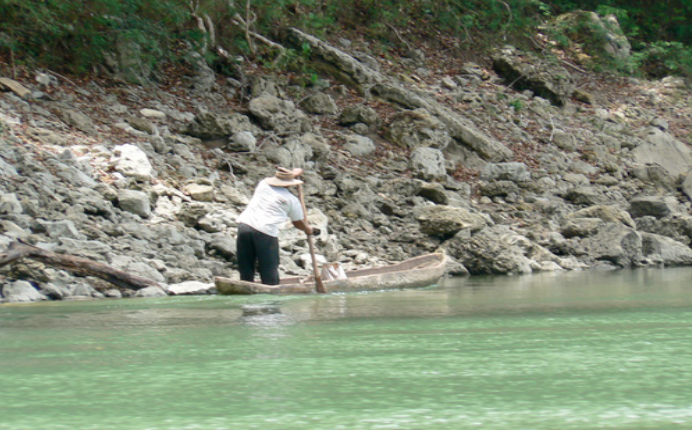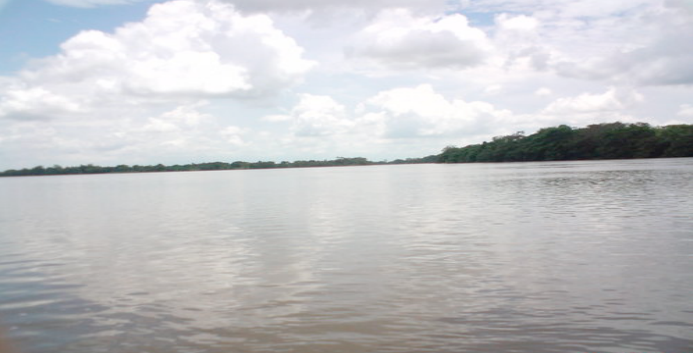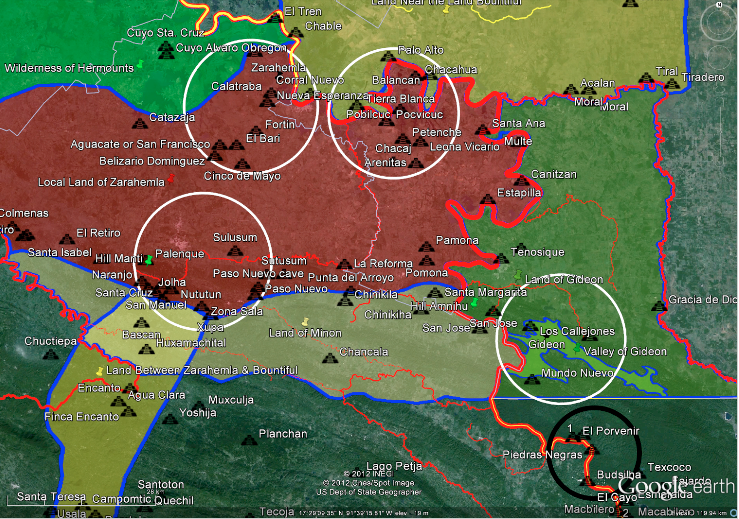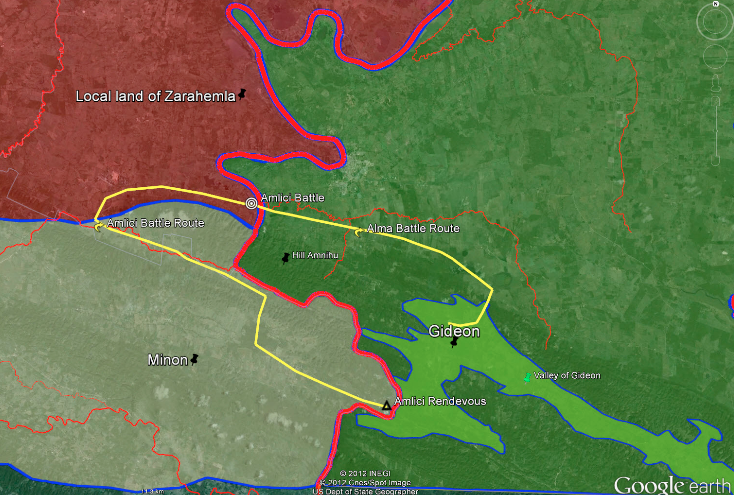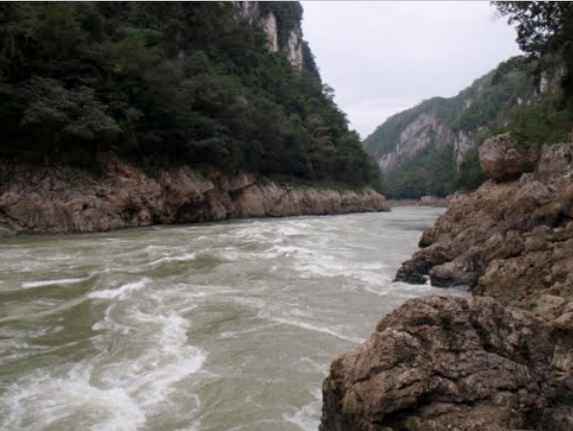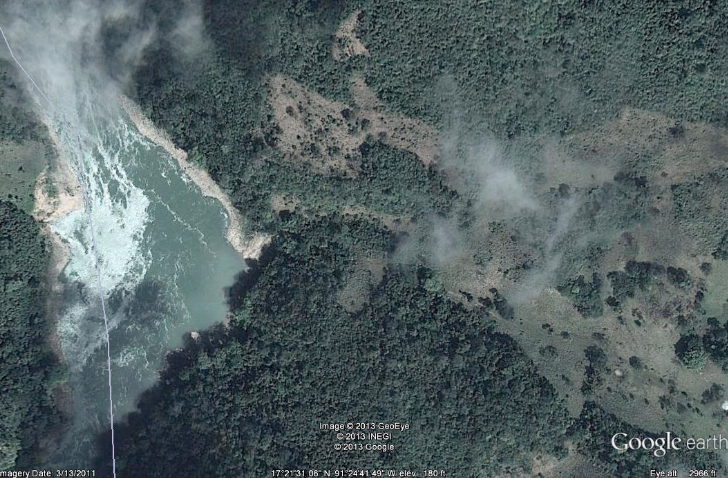Magleby’s Gideon and Zarahemla are misplaced
Magleby’s Gideon and Zarahemla are misplaced
by Joe V. Andersen
December 2012
joeandersen38@Gmail.com
First, I will show what the Book of Mormon states relative to the above stated issues. Then a Google map will show the area proposed by Magleby as his city Zarahemla (Emiliano Zapata), and the areas of his proposed Minon and Gideon relative to Emiliano Zapata. After that I will quote and respond to some of Magleby’s erroneous statements taken from his Blog article entitled GIDEON, which will show that Magleby’s proposed locations for Gideon and Zarahemla are misplaced.
What the Book of Mormon states about the Amlicite rebellion
In the year 87 BC the Amlicite battle began on the hill Amnihu, which was located eastward of the city of Zarahemla and east of the river Sidon. They fought and fled all the first day and then Alma camped for the night in the valley of Gideon. Alma sent spies to follow the beaten, tired and maimed Amlicite army, after having killed 12,532 Amlicites.
Alma 2:24-35 states: 24. Behold, we followed the acamp of the bAmlicites, and to our great astonishment, in the land of Minon, above the [city] land of Zarahemla, in the course of the [city] land of cNephi, we saw a numerous host of the Lamanites; and behold, the Amlicites have joined them;
25. And they are upon our brethren in that land; and they are fleeing before them with their flocks, and their wives, and their children, towards our city; and except we make haste they obtain possession of our city, and our fathers, and our wives, and our children be slain. This means that if they hurried they could have arrived at the city of Zarahemla before the Amlicites, and they could have done it within one day. It was a close call but the Nephites prevailed. 26. And it came to pass that the people of Nephi took their tents, and departed out of the valley of Gideon towards t heir city, which was the city of bZarahemla. The city was their destination. 2. And behold, as they were crossing the river Sidon, the Lamanites and the Amlicites, being as anumerous almost, as it were, as the sands of the sea, came upon them to destroy them. The Lamanites arrived at the battleground on the west bank of the Usumacinta before the Nephites. The terms “they” and “them” refer to the whole army of the Nephites and they were all crossing the river Sidon but were pinned in the river until Alma could clear the west bank of the river. Even though the Lamanites arrived first, the Nephite presence, albeit in the river, apparently threatened the Lamanites sufficiently that they had to attack the Nephites at the river’s edge rather than run the risk of being attacked and trapped from behind. Therefore the Lamanites did not go into the city of Zarahemla. This is confirmed by the fact that the Nephite army’s “wives and children and houses” were all safe after the Lamanites and Amlicites were destroyed.
29. And it came to pass that Alma fought with Amlici with the sword, face to face; and they did contend mightily, one with another.
31. Now when Alma had said these words he contended again with Amlici; and he was strengthened, insomuch t hat he slew Amlici with the sword.
33. But Alma, with his guards, contended with the guards of the king of the Lamanites until he slew and drove them back.
34. And thus he cleared the ground, or rather the bank, which was on the west of the river Sidon, throwing the bodies of the Lamanites who had been slain into the waters of Sidon, that thereby his people might have room to cross and contend with the Lamanites and the Amlicites on the west side of the river Sidon. This wording implies a foot crossing and not by canoes. Alma was certainly not fighting from a canoe.
35. And it came to pass that when they had all crossed the river Sidon that the Lamanites and the Amlicites began to flee before them, notwithstanding they were so numerous that they could not be numbered.
Therefore, it is clear from the Book of Mormon that:
|
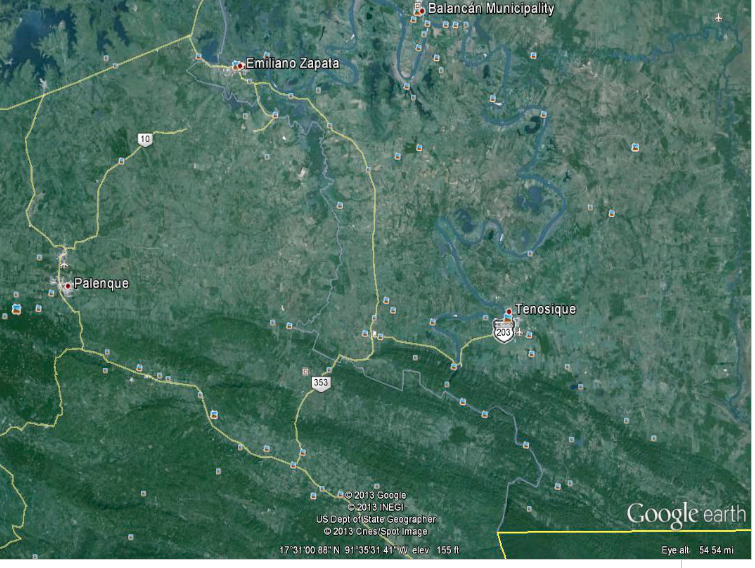
Some erroneous statements from Magleby’s Blog article, GIDEON.
The following statements come from Magleby’s Blog article entitled GIDEON dated December 13, 2011 located on his website Book of Mormon Resources. My criticisms and comments are in red. Book of Mormon quotations that I cite will be italicized and in red. Within this section all of the text in black will be Magleby’s writing. The following will not only show many erroneous statements and conclusions but it will also prove that Magleby’s overall map is not compatible with the Book of Mormon:
|
The land of Minon, above (higher in elevation than & upstream from) the land of Zarahemla, was less than 1 day's travel from the valley of Gideon Alma 2:24 6 The more accurate and controlling statement would be that the distance between Gideon and Minon could not have been greater than a half night’s march, including the crossing of the Usumacinta because the Amlicites joined forces with the Lamanites in Minon the day after fighting with the Nephite troops who over nighted in the valley. Although minor, this is an example of many incorrect statements. They did not join forces the day after fighting. They joined forces by midnight of the same day they began fighting. They had been continuously fighting and fleeing for about 18 hours.
The Amlicites, in league with the Lamanites, had set a trap for the Nephites, hoping to pin the Nephite army down in the hill Amnihu area east of Sidon while the Lamanite army marched down the west bank of river Sidon toward the city of Zarahemla Alma 2:25. This scripture does not state that they “marched down the west bank.” We should not add so much unknowable conjecture to the scriptures. Look at all the Google maps in this article. They show the impossibility of “marching down the west bank” of the Usumacinta River. This means the valley of Gideon is less than 1 day's travel from river Sidon 9 because the Amlicites crossed the river and joined the Lamanites on the west bank Alma 2:34. Again this is a misstatement. The text does not say that the Amlicites “joined the Lamanites on the west bank.” It does not say that it was less than one days travel from the river Sidon. It does say that it was not more than a half a nights’ march, including crossing the river Usumacinta, from Gideon to Minon and therefore, Minon and Gideon could not have been more that about 4 or 5 miles apart. Therefore Gideon could not have been more than about 2 miles or so from the Usumacinta. After they crossed the river they traveled as much as about 2 or 3 miles to the land of Minon.
The valley of Gideon was prominent because it had a name. Many valleys are mentioned in The Book of Mormon text. Only seven valleys are referenced by name - Lemuel 1 Nephi 2:14; Alma Mosiah 24:20; Gideon Alma 2:20; Nimrod Ether 2:1; Gilgal Ether 13:27; Corihor & Shurr Ether 14:28. Only two of these named valleys (Alma & Gideon) are in the Nephite New World. Most toponyms in the text refer to large or distinctive features. We would expect the valley of Gideon to be large & conspicuous. 10 This is pure unfounded speculation that the valley of Gideon would be “large and conspicuous.” How does Magleby know this? Or that the valley of Lemuel was “large and conspicuous?” What does “large and conspicuous” mean according to the Book of Mormon? To whom is it conspicuous? How does Magleby know that the valley of Alma was “large?” Please reread Mosiah 24:20-24 wherein it appears that the valley of Alma was not “large and conspicuous.” We should avoid such guesswork.
From the valley of Gideon, there was another way to the city of Zarahemla that was shorter than the route the Amlicites & Lamanites took through the land of Minon Alma 2:26 11 This is pure fantasy. How does Magleby know it was a shorter route? The Book of Mormon does not confirm this nor does it infer it. because Alma's advance troops arrived in the local land of Zarahemla ahead of the enemy Alma 2:27. It boggles the imagination how Magleby can make this incorrect statement. The text says nothing about any “advance troops.” The Nephites did not arrive in the city/land of Zarahemla ahead of the enemy. The enemy arrived at the crossing of the Usumacinta ahead of the Nephites and pinned them in the river. All of the army of the Nephites were either standing in the river Sidon or on the east bank waiting for Alma to slay Amlici and then kill the guards of the Lamanites so that a path was cleared to allow the soldiers of Alma to climb out of the river upon the west bank and fight the enemy. See Alma 2: 27, 31, 33, 34 quoted above.
The city of Gideon was the principal population center in the valley of Gideon Alma 6:7. 13 Magleby is mixing time periods and making up facts. The city of Gideon was not built until after Gideon’s death in 91 BC and until after the Amlicite insurrection and before 83 BC (Alma 6:7). How does Magleby know that there was more than one population center in the valley of Gideon? The Book of Mormon does not say or infer it.
From the land of Gideon to the land of Manti is not south but southward Alma 17:1. 15 True, however because Minon was located south of Zarahemla; and because Minon could not have been more than 5 miles from Gideon; and because both Gideon and Minon could not have been more than a day’s march from the city of Zarahemla; then Gideon must have been located more south than east, making Minon mostly west from Gideon. Because both of these areas were “up” from the city of Zarahemla and because the city of Zarahemla was located north of, and down from, and “by” the land of Manti, then Minon and Gideon must have been located within the foothills on the north side of the narrow strip of wilderness between Manti and Zarahemla. The city of Zarahemla certainly could not have been located 200 air miles from the narrow strip of wilderness (see page10).
The land of Gideon was also an interface with points east. 17 Captain Moroni's trip from the cities near the east coast took him west to the land of Gideon Alma 62:3. Correct and Gideon was located west of the city of Moroni because captain Moroni was following a route from the land of Moroni located on the east sea just north of (and parallel to) the narrow strip of wilderness to the city of Zarahemla. Therefore the city of Zarahemla should have been located much closer to the narrow strip of wilderness and just down from the city/land of Manti as stated in Alma 22:27. Also see Alma 56:25 where it says that the Lamanites in Manti “durst not march down against the city of Zarahemla….” It did not say that after they went down out of the narrow strip of wilderness from Manti that they would have continued 180 miles northward along the Usumacinta/Sidon River!
The lands of Gideon & Jershon have similar average elevations with higher ground in between 18 because Korihor went from Jershon over into Gideon Alma 30:21. The text does not say this. The term “over” could have referred to a river or impediment other than “higher ground.” This is not evidence of “similar average elevations,” as if that even made any difference. The text states that Ammon “caused that he [Korihor] should be carried out of the land” and then Korihor went over into the land of Gideon. How far out of the land did Korihor go before he went over? Remember that Jershon was located on the east seacoast adjacent to Moroni which was located between Jershon and Antionum to protect the Ammonites. West from the area of Jershon and Moroni would have placed Gideon not northward to near Emiliano Zapata but westward to an area south of the confluence of the Usumacinta and the Pasion Rivers. This reasoning confirms that Gideon and Minon actually were located up in elevation from Zarahemla in the foothills of the narrow strip of wilderness. Alma 22:27 states that Zarahemla was located “by” or near the narrow strip of wilderness: 27….and the borders of the [narrow strip of] wilderness which was on the north by the land of Zarahemla…” This means that the northern part of the narrow strip of wilderness, where Manti was located, was “by” or “near” or in close proximity to the city/land of Zarahemla.
The second Lamanite invasion in 87 B.C. ended in a battle in the land of Minon where the Nephite army again defeated the Lamanite aggressors Alma 3:20. After their victory, the Nephites drove the Lamanite survivors out of the borders of their land Alma 3:23. This means the valley of Gideon, just across the river from the Amlici - Lamanite rendezvous point, was not far from the borders of the Nephite nation 20 in 87 B.C. I agree with this statement which does not help Magleby’s proposed location of the city/land of Zarahemla, unless the term “not far” means 150 air miles. I believe that the term “not far” should be closely aligned with the term “near” or “by” which, by Magleby’s definition, means “in close geographical proximity.” No one in their right mind could possibly deem a distance of about 150 air miles in the jungle and within the very difficult terrain along the very winding Usumacinta River as being in “close proximity.”
There is also a major topographical feature one has to cross over to travel between the local land of Zarahemla and the land of Gideon 22.Yes and that is the world’s 7th largest river known as the Usumacinta, a picture of which follows. It was taken about 6 miles north from Magleby’s Gideon after the Usumacinta exits the Lacandon canyons area and between Magleby’s proposed Gideon and his proposed city/land of Zarahemla:
|
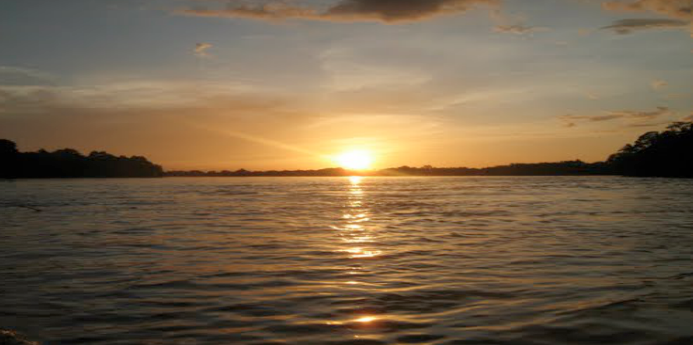
|
From the local land of Zarahemla, the valley of Gideon was on the way to the city of Ammonihah. Absolutely not. Ammonihah was located west of Zarahemla as shown in my BMAF article entitled Response to Magleby’s Book of Mormon Model, and as demonstrated by John Sorensen, Richard Hauck and many other scholars, who Magleby wrongfully claims are perpetuating a “False tradition.” Nehor was traveling through the valley of Gideon headed toward his followers in Ammonihah when he contended with and slew the aged Gideon. The text does not say or infer such a bogus construction. Carefully read Alma 1:2-10, following, and see if it says what Magleby believes: (1) That Nehor was traveling though the valley of Gideon; or (2) That he slew Gideon in the valley of Gideon; or (3) That he was headed toward Ammonihah. Remember that this was the year 91 BC, the first year of the republic and 4 years before the Amlicite insurrection. Gideon could have been living in the valley of Gideon, however the city had not yet been established. Magleby places Gideon an impossible 40 miles southeast from Emiliano Zapata (see map above). 2. … in the first year of the reign of Alma in the judgment-seat, there was a aman brought before him to be judged, a man who was large, and was noted for his much strength. [Therefore he was known in the city of Zarahemla. The city of Gideon had not been established yet.] 3. And he had gone about among the people [in the city/land of Zarahemla], preaching to them that which he atermed to be the word of God, bearing down bagainst the church [in the city of Zarahemla]; declaring unto the people that every priest and teacher ought to become cpopular; and they ought dnot to labor with their hands, but that they ought to be supported by the people. [ How many priests and teachers were living in Gideon at 91 BC? Supposedly 40 miles from Zarahemla?] 5. And it came to pass that he did teach these things so much that many did believe on his words, even so many that they began to support him and give him amoney. [This was not happening in the valley of Gideon 40 miles away where a city had not been developed.] 6. And he began to be lifted up in the pride of his heart, and to wear very costly aapparel, yea, and even began to bestablish a cchurch after the manner of his preaching. [There is no evidence that this church was being established in the valley of Gideon, or anywhere except in the city of Zarahemla]. 7. And it came to pass as he was going, to preach to those who believed on his word, he met a man who belonged to the church of God, yea, even one of their ateachers; and he began to contend with him sharply, that he might lead away the people of the church; but the man withstood him, admonishing him with the bwords of God. [There is no inference in this scripture that Nehor was traveling to or through Gideon; Or that those who believed on his word were the people living in the valley of Gideon or in Ammonihah; Or that the conversation with Gideon occurred in the valley of Gideon. This is all unfounded conjecture by Magleby. More likely Nehor was going to wherever his church was being located within the city of Zarahemla to preach]. 10 And the man who slew him was taken by the people of the church, and was brought before Alma, to be ajudged according to the crimes which he had committed. [There is nothing in the text to indicate that the people of the church were anyone other than those who were living in the city/land of Zarahemla]. For more insights on the textual requirement that Ammoniah is east of Sidon, and the problems caused by the false tradition that Ammonihah is west of Sidon. This is not a “false tradition” but one completely supported by the text of the Book of Mormon (See my article located at BMAF entitled RESPONSE TO MAGLEBY’S BOOK OF MORMON MODEL, confirming that Sorensen and Hauck were correct after all.
With the 50 kilometer wide land of Gideon in between, [To believe that Maglby knows from the Book of Mormon that the land of Gideon was 50 kilometers wide is pure fantasy] there is enough distance between the local land of Zarahemla and the land of Ammonihah for large scale concurrent military preparation, but they are close enough to have been together at one time as sister lands under the authority of the young Nephite republic. For insights into the expansion of Nephite lands over time, see the article "Expansion of the Nephite Nation" in this blog. Criterion 2 satisfied. This is just too much unfounded conjecture. It would be better to read my BMAF article entitled Zarahemla, its Rise and Fall. This correlation has the Amlicite forces coming from the east, skirting around the more populated areas in the valley of Gideon. Criterion 3 satisfied. Where in the Book of Mormon does it say that there were populated areas in the valley of Gideon at the time of the Amlicite insurrection? Or that the Amlicite army skirted around Gideon? In this terrain, the Amlicite army could plausibly evade Alma II and his Nephite army bivouacked in the valley of Gideon, cross the river Sidon, and join up with their Lamanite allies the next day in the land of Minon. Criterion 6 satisfied. This is make-believe. The Amlicite army did not evade Alma. Alma was chasing the Amlicites until nightfall. Then he had his spies follow them until midnight during which time the Amlicite army crossed the river Usumacinta and joined the Lamanite army at Minon. Our land of Minon, adjacent to the valley of Gideon, clearly lay between the local land of Zarahemla and the distant land of Nephi far to the south. Magleby just said on page 6 above that Gideon ”was not far from the borders of the Nephite nation 20.” Now he is saying that Minon, 4 miles from Gideon, was “far to the south.” Which is it? The Book of Mormon indicates that Minon was located not more than a day’s distance from the city of Zarahemla. Minon was located south of Zarahemla and between the city of Zarahemla and the city/land of Nephi. The land of Manti was located within (and on the northern edge of) the narrow strip of wilderness and between Nephi and Minon. The land of Nephi was not located 220 air miles away. Magleby’s distances are much too great to fit the requirements of the Book of Mormon. Assuming that Magleby’s locations and distances are correct, then it is most unreasonable to believe:
All this happened in less than one year. Helaman 6:1 says: “…when the… [30th year BC] had ended, all these things had happened and the Lamanites had become, the more part of them a righteous people…”
It is not possible that Nephi and Lehi could have accomplished all of these things in one year, assuming the distances and locations as proposed by Magelby. The conclusion is inescapable that for Nephi to have accomplished all the above in one year, the distance between the city of Nephi and the city of Zarahemla must have been within 60 or 70 miles of each other (certainly not 240 air miles); Nephi must have been located within eyesight of and just south of the narrow strip of wilderness; The city of Zarahemla must have been located just north of and down 40 miles or so from Manti; Manti had to have been located on the northern edge of and within the narrow strip of wilderness and “by” the city of Zarahemla; The east-sea city Bountiful must have been located very near Moroni near the Gulf of Honduras and not 180 miles north to Dzibanche. Magleby’s map is unbelievable in that the land Bountiful included such cities as Lamanai on the Belize coast, many cities along the Gulf of Mexico, many cities in the Isthmus of Tehuantepec , many cities on the Gulf of Tehuantepec and Magleby’s Nephite “outpost” at or near Tonala, Mexico. This is a linear distance of an additional 650 miles or more. The text requires that Nephi and Lehi visited “all of the Nephites from city to city in the land southward.”
In our proposed scenario, Alma & his troops had to travel 25 trail kilometers and then cross river Sidon to reach the battlefield. But, Amlici & his men had to travel 43 trail kilometers after they crossed the river. Those 18 additional kilometers were what gave Alma's advance units time to reach the battlefield just ahead of the Lamanite - Amlicite army. Criteria 11 & 12 satisfied. Again this violates what the text says. This battlefield was the west bank of the river Sidon. The text indicates that no Nephite got to the west bank ahead of Alma and no Nephite arrived on the west bank ahead of the Amlicites. Where does Magleby get an “advance unit?” Amlici and the Lamanite army got to the battlefield first and then trapped Alma and his soldiers in the river Sidon until Alma could kill Amlici and the Lamanite guards. A side note. Q. How did all these fighting men get across the river? A. They paddled or poled across in canoes or other small water craft that went back and forth shuttling men and materiel. That is why the battle on the west bank of Sidon had been going on for some time before the last Nephite warriors finally joined in the fray Alma 2:35. This is not a side note. It is the main event. The reason for the delay in getting upon the west bank was because Alma was personally fighting Amlici and the Lamanite king’s guards in order to clear the west bank so that Alma’s army could climb out of the water onto the west bank. The Nephites had probably returned to the same crossing as the first day which was possibly located about a mile or so south of the city of Zarahemla. Can one believe that perhaps as many as 30,000 Nephite soldiers crossed the Usumacinta River in canoes (Cayucos)? The first day? And then perhaps 24,000 soldiers returning the second day? Or that thousands of tired and wounded Amlicites crossed the Usumacinta River? At night? In a couple of hours? Traveling on the ground at least 4 miles? At night? Or that Alma’s spies crossed the Usumacinta River at night? Two times? In addition to traveling about 4 miles each way? At night? In two words: UNBELIEVABLY IMPOSSIBLE. CONCLUSION How many Cayucos would have been required to carry about 30,000 thousand soldiers with their gear and tents and weapons of war across the Usumacinta at any of the following locations? Did the Nephites have thousands of Cayucos at the ready anytime and anywhere they desired to cross the Usumacinta? Did the Amlicites also have hundreds of Cayucos at the ready with lights on them to be able to cross the Usumacinta at night? Look at the following pictures and see if you could possibly believe what Magelby is proposing: |
